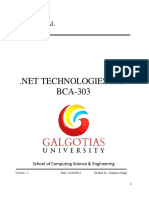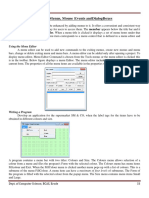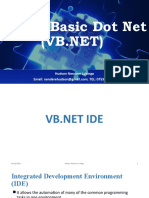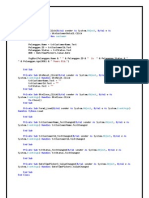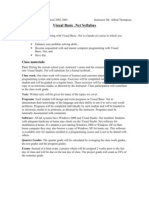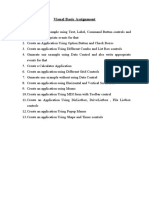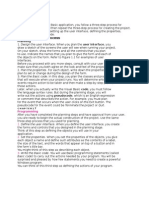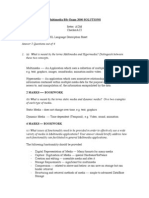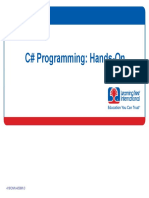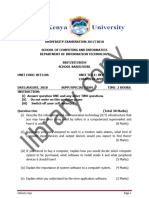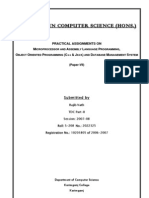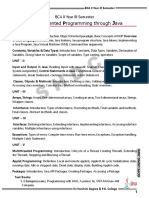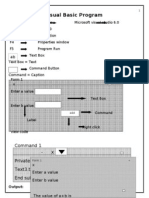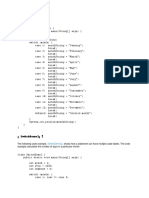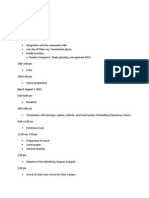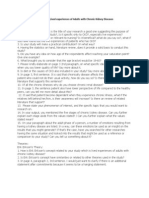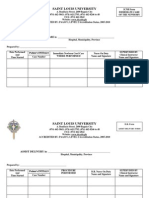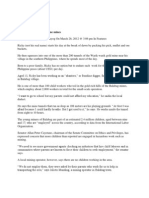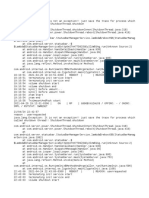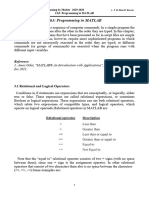VISUAL STUDIO.
NET
OVERVIEW
Microsofts comfortable old Visual Basic is undergoing a major refit and the results are amazing. Microsofts
Visual Basic.Net is one of the core development language in the new Visual Studio.NET and it remains a critical
component in almost every enterprise wide development effort.
OBJECTIVES
AUDIENCE
At the end of the training, the student should be
able to learn :
Object Oriented Programming Concepts
Windows Forms Controls
ADO.NET Data Access
Inheritance, Override members
Use VB.NET for COM access
Debugging
Error Handling with Exceptions
.NET data structures
Anyone interested in Understanding
VB.NET
Programmers
Software Developers
VBA Experts
IT Personnel interested in the latest Visual
Studio Developments
COURSE BENEFITS
Hands-on Training
Practical Real World Examples
COURSE OUTLINE:
I.
THE VISUAL STUDIO.NET
DEVELOPMENT ENVIRONMENT
II.
IV.
WORKING WITH CONTROLS
The Visual Studio .NET languages
Standard Project types
Environment options
Creating Windows GUI applications
Populating forms with controls
Setting control characteristics
Text box, label and list box controls
Creating push buttons and check boxes
Grouping radio buttons with panels and
group boxes
THE .NET FRAMEWORK
V.
III.
The build process
The Common Language Runtime (CLR)
Compiling, running and saving your
projects
Application distribution and deployment
Language Fundamentals: VARIABLES
Declaring variables
Choosing data types
Scoping variables
Defining constants
Creating arrays
CREATING AND USING FORMS
VI.
Form characteristics
Adding forms to your project
Using properties to refine the interface
Inserting event procedures
EXPRESSIONS AND STATEMENTS
Performing calculations with expressions
and arithmetic operators
Testing results with relational and logical
expressions
1|Page
VII.
Assignment statements
Commenting code effectively
XII.
CONTROL FLOW
VIII.
Controlling execution sequence with
conditional logic
Branching instructions
Repeating code sequence with loops
XIII.
IX.
Building a Professional GUI : ADDING
MENUS
X.
XI.
The design and layout of dialog boxes
Built-in and common dialog boxes
Building and showing custom dialog boxes
Exchanging data with the parent form
INTEGRATING ADVANCED CONTROLS
XIV.
Displaying tabular data with a list view
Organising dialogs with the tab control
Resizing panes with the splitter control
XV.
Course Fee:
Registration Fee:
Miscellaneous Fee:
Total Fee:
Instantiating objects
Building custom classes
Adding properties and methods
Comparing collections to arrays
ACCESSING DATA WITH ADO.NET :
FILE I/O
XVI.
Working with the file object
Reading and writing streems
MANIPULATING DATA WITH ADO.NET
DURATION
Object-oriented design in .NET
The relationship between classes and
objects
Employing inheritance to reuse base
classes
Protecting private data with property
procedures
IMPLEMENTING AND USING CLASSES
Designing menus
Pop-up contact menus
Adding toolbars
EXTENDING THE USER INTERFACE
WITH DIALOGS
Increasing modularity with subroutines and
functions
Passing parameters
Scope
Debugging and defensive programming
Types of errors
Catching exceptions
CLASSES AND OBJECTS
METHODS
Object-Oriented Programming:
STRUCTURED EXCEPTION HANDLING
The ADO.NET object model
The data binding model
Connecting to a database server
Interacting with data using forms and the
data greed control
The connection-oriented
Connection/Command models
30 hours
P 10,500.00
300.00 (one time payment)
300.00 (per course)
P 11,100.00
2|Page
